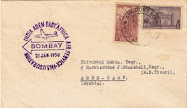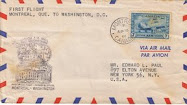From 19th September, 1870 to 28th January, 1871, 66 balloons were used by the Parisians to carry 155 refugees, 354 carrier pigeons and over 2.5 million letters out of Paris. Each piece flown required a notation "Par Ballon Monte" indicating that it was a manned balloon. Balloon montes are relatively expensive and prices can vary according to specific balloons and markings.
Covers flown out of Paris were then forwarded to the addressees through normal mail channels.
Special balloon postcards 10 x 7 cm were manufactured of thin green paper subject to a maximum weight of 4gm.

The address side of a balloon postcard from the siege of Paris, 1870. Postage of 20 centimes was imprinted on the card.










